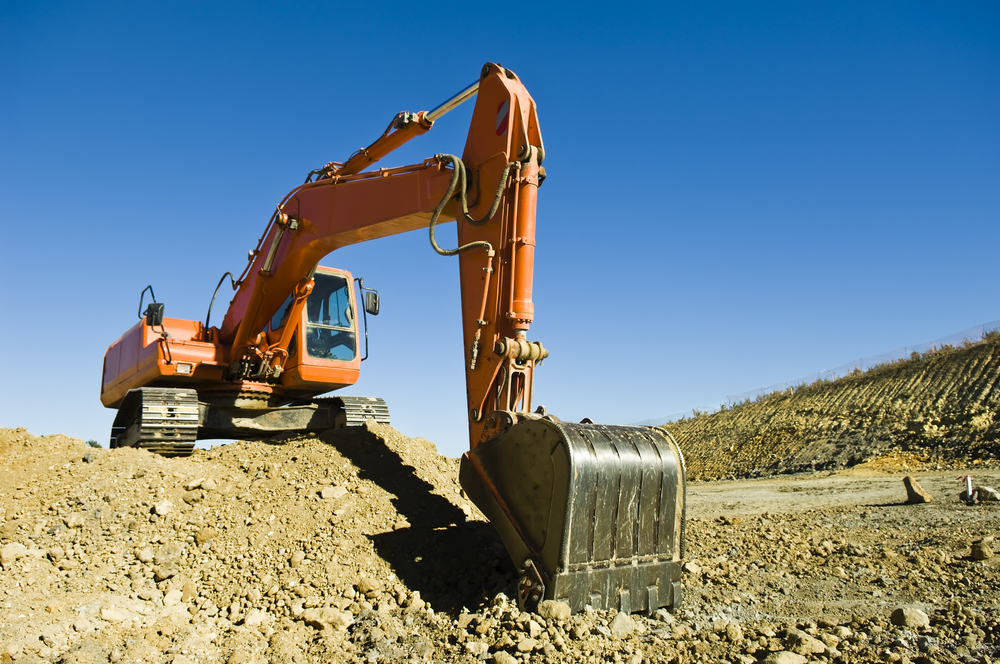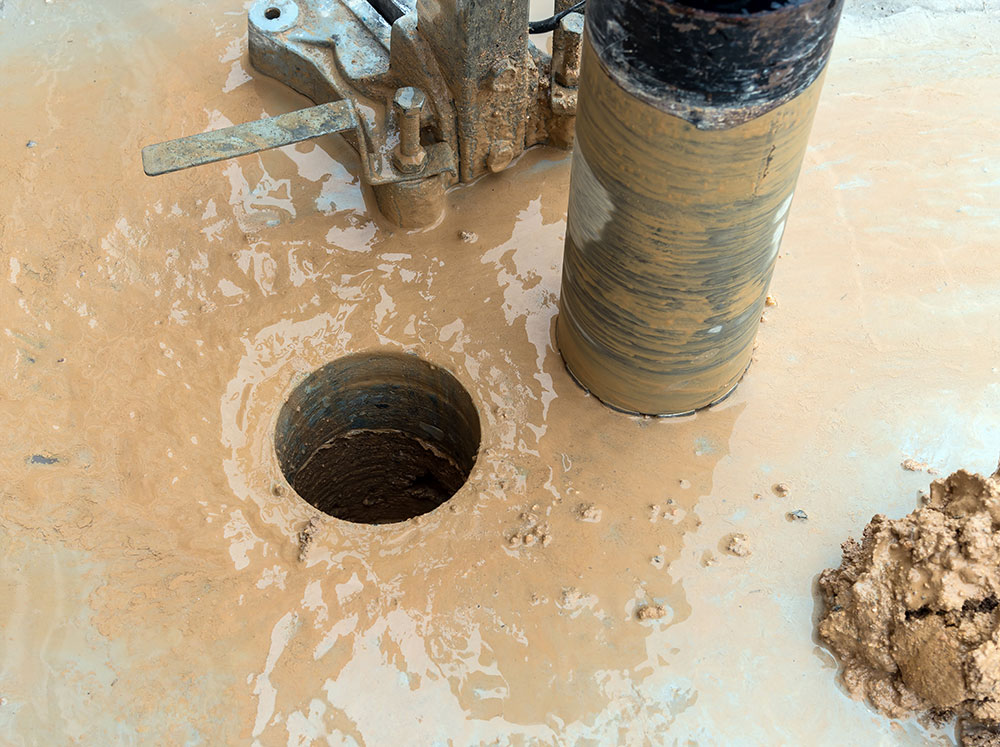Concrete and the city
Foundations for street furniture
In urban areas, be it a small town or a metropolis, it lies in the responsibility of the city administration to equip open spaces in public areas with appropriate street furniture like benches, waste containers, bollards, etc. In parks and public spaces, citizens ask for appealing street furniture. Waste containers effectively counteract the littering of spaces, and bollards prevent unauthorized driving. In recent years, there is an increasing need to be able to provide places with robust shut-off mechanisms in order to counter the threat of terrorism during large events, such as concerts or Christmas markets. The above-ground, visible part of all the aforementioned furniture immediately catches the eye. A new park bench in a green area is used immediately after it has been set up; the same applies to waste containers (at least, in the best of scenarios). Bollards do also have a prompt effect and are noticed by the city residents immediately. However, the main load of street furniture lies underneath the ground.
Why built a foundation at all?
The common bollard is about 90 centimeters high, has a diameter of about 100 millimeters, and is, depending on its purpose, either made of solid steel or cast aluminum (of course, variants made of aluminum tubes, wood or plastic are also available). Prior to their installation, bollards get powder-coated, which ensures a longer service life. By default, the color “DB 703” (iron mica fine structure) is used as base color; for an improved visibility, the posts often get a few color rings in signal red. After their successful production, the bollards are anchored to the ground, preventing unauthorized circulation of vehicles of all kinds in squares, driveways, and similar locations.
On closer examination, a bollard is a resistant product that can also withstand more serious collisions with cars or trucks. While a hollow steel tube can still be deformed or bent with the right amount of kinetic energy, resulting from mass times speed, solid steel proves to be a resistant final boss that may bend, but won’t break (depending on its primary material and its basic construction, of course).
The common bollard from our example is embedded in concrete. For this purpose, a sufficiently large hole is dug in the ground. The bollard is placed inside and aligned using a level, and the hole is filled with concrete. In order to get the bollard its adequate stability, 30 centimeters below ground level is usually sufficient.
But with large models made of particularly solid steel especially, this procedure has a drawback: the resistance during an impact is not only determined by the material properties, but also by an accordingly sized foundation.
Bollards consist of an aboveground and an underground part, the latter serving as anchor in the foundation. To ensure sufficient stability, even with large material thicknesses, bollards should have an adequately large ground recess. The length of the latter determines the dimensions of the foundation.
For specific anti-terrorist bollards, the subsurface length may equal, or even exceed, its aboveground counterpart. With an extended ground recess, both the excavation of a larger foundation and the production of this special bollard imply an increase in costs, in favor of a more significant resistance. Considering these high costs, the benefits become questionable in the end.
Flexibility provided by the right street furniture foundation
Unfortunately, not everything is as easy as it looks. Of course, bollards, waste containers, or even the feet of park benches could be anchored directly into the fresh concrete of a foundation as described above. Depending on the craftsmanship and on the precise alignment, the result will even look quite appealing – also, the built-in parts would fulfill their purpose. However, this procedure would be an action for eternity. Once a post has been embedded in concrete, it can only be removed with the greatest of efforts and with heavy equipment. Up until the first contact with a bumper such a foundation may not be bothersome, but at the latest when a dented and bent post has to be replaced, the extra effort for the replacement will prove to be substantial.
When bollards, posts, and park benches are to be anchored permanently as well as flexibly and interchangeably to the ground, two proven techniques, as alternatives to solid embedding in concrete, can be chosen from: flanges and ground sockets.
To fix street furniture with flanges, first, a hole is dug and filled with concrete. After its curing, a flat surface is now available. On this surface, the corresponding bollard or post, provided with a flange at its lower end, is set; drill holes in the flange allow its attachment to the foundation. By the way: the somewhat unsightly fixing elements can be covered, by flanging the bench or the bike rack first, then by recovering the flanges with paving!
Alternatively, the furniture can be fixed in the foundation with ground sockets. Again, of course, a hole is dug in the ground. In this hole, a ground socket with a diameter corresponding to the post or bollard is set, aligned, and cast with concrete. After a proper curing time, the accommodation is ready and the parts can be inserted, and additionally fixed by plug-in or screw systems.
The benefit of both variants lies in the comparatively simple interchangeability of the furniture elements in case of defect or wear and tear.
In general, these are the options for street furniture fixation:
- Fixed installation: the furniture remains at its construction site permanently
- Underground flange: the furniture can be removed with a great deal of effort
- Aboveground flange: the furniture can be removed with conditional flexibility and little effort
- Ground socket: the furniture can be removed flexibly and effortlessly
Do pad foundations for street furniture always have to be angular-shaped?
Looking at illustrated building instructions or technical descriptions of street furniture manufacturers for the proper construction of a foundation, it is noticeable that they usually refer to square shaped or rectangular shaped foundations. In terms of construction, this means that the excavation will be done comparatively slowly. Obviously, many developers would like to resort to the possibility of core drilling which not only economizes the amount of work but also of energy.
But can a drilled foundation have the same characteristics as an excavated foundation? Yes, it does. To a foundation, the geometric shape is irrelevant – what is important is that the size of the design is consistent with its purpose. However, since the construction of a foundation always depends on the subsoil, technical descriptions and instructions use dimensions and drawings of general nature, in order to conform to as many types of subsoil as possible.
Particular challenges for foundations: soft grounds, high pavements
City planners may already know: there is no such thing as the perfect subsoil. Either the foundation has to be set in soft, sandy, or loamy soil, or the much needed bollard has to be installed on already existing paving. In either case, the available ground socket standard lengths do not suffice to guarantee adequate stability. On challenging subsoils, a properly deep foundation is enough to provide sufficient stability, whereas in the case of paving, the height of the stones has to be taken into account when calculating the length of the sockets. In both cases, the length actually matters. While standard socket provide around 300 mm in length, severe cases require a length of 500 mm or more. Regardless of the subsoil or the paving, the quality of the foundation determines the future stability. Hence, the extra costs for a high-quality, optimally executed foundation actually pay off!
Organizational challenges in foundation construction
Especially in heavily frequented areas in inner cities, on busy roads, or on demanding terrain, foundation construction is associated with strategic decisions during the planning phase already. The inevitable construction sites are not to affect traffic unnecessarily. The following points should therefore be considered before foundation construction:
Setting up the construction site
Whoever operates a construction site is responsible for traffic safety. Potential dangers for pedestrians, vehicles, and the companies commissioned with the construction work are to be excluded with adequate measures. As soon as the groundwork is about to start, appropriate fences or barriers have to be set up. Any necessary power connections have to be protected against unauthorized access.
Time requirement + implementation
Trained workers only need a few hours to build a series of regular sized pad foundations. After the excavation for the foundation, the concrete is mixed and evenly filled into the pit until the ground level is reached. By lightly tapping on the still liquid mass with a suitable tool the foundation gets compacted and thus more durable and firmer. While the actual work can be carried out rather quickly, one to two days are to be expected for the concrete to cure.
Anticipatory action
For the permanent installation of street furniture in particular, anticipatory action is mandatory. In fact, there have already been cases where bollards were installed around a traffic island, failing to remove the vehicles that were parked there first. Also not uncommon is the non-observance of the flora and fauna when installing street furniture, benches or tables more specifically. If these are installed, with the best of intentions, under shady trees, it is worth taking an upward glance. Birds breeding exactly over the bench are a guarantee for furniture permanently covered with dirt. But not only birds can soil new benches and tables in a short time. Lime trees, very common in public areas, can also afflict any kind of street furniture. The tree itself is not to blame, but the aphids dwelling on it. They secrete honeydew, an exceedingly sticky substance that settles on everything underneath the treetop. With clever planning and optimal site selection, such restrictions can be avoided beforehand.
Read more about concrete:
Part 1 of 4: A little history (of success) of concrete
Part 2 of 4: Structural change
Part 3 of 4: What exactly is a foundation?
Parc d’Activité Syrdall 48, rue Gabriel Lippmann L-6947 Niederanven FON +352.28 67 65 01 FAX +352.28 67 65 20 shop@abes-online.com

